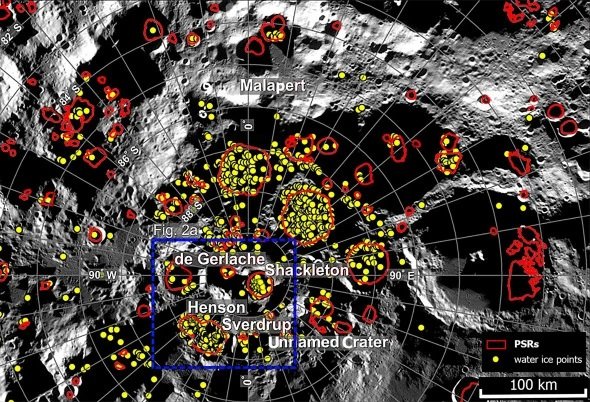
In a historic achievement, researchers from the Physical Research Laboratory (PRL) Ahmedabad, Panjab University Chandigarh, and ISRO’s Laboratory for Electro-Optics Systems (LEOS) in Bengaluru have created the first detailed geological map of the Moon’s south pole. This milestone was made possible using data from the Pragyan rover, which explored the lunar surface as part of the Chandrayaan-3 mission.
Chandrayaan-3: Unlocking the Mysteries of the Lunar South Pole
The Chandrayaan-3 mission marked a significant advancement in India’s space exploration efforts. Its Vikram lander successfully touched down in a high-latitude polar region—a first in lunar exploration. It deployed the Pragyan rover, which operated for nine days, analyzing the chemical composition of the lunar regolith (soil). The mission provided crucial insights into the Moon’s geological past, opening new avenues for scientific discovery.
Discovery of Underground Magma: Evidence of a Molten Lunar Past
One of the most groundbreaking findings from the mission was the confirmation of primordial magma beneath the Moon’s surface. Using data from the Alpha Particle X-ray Spectrometer (APXS), researchers detected traces of an underground ocean of molten rock—a long-standing theory that lacked conclusive evidence from polar regions. This discovery enhances our understanding of the Moon’s formation and thermal evolution.
Geological Mapping: A Glimpse into Lunar History
The newly created geological map reveals a diverse landscape of highlands and flat plains, shaped by ancient impact events. Researchers were able to trace secondary craters back to their primary impact source—the Schomberger crater. This mapping effort suggests that the region is approximately 3.7 billion years old, coinciding with the period when microbial life was emerging on Earth. This parallel timeline raises intriguing questions about the potential for early life-forming conditions beyond our planet.
The Importance of Lunar Craters: Time Capsules of the Solar System
Lunar craters serve as natural archives of the solar system’s history. Unlike Earth, where erosion and geological activity erase impact features over time, the Moon’s craters remain largely unchanged for millions, even billions of years. This allows scientists to study the cratering history and infer the geological timelines of other planetary bodies.
Challenges of Lunar Contamination: A Growing Concern
As lunar exploration intensifies, the issue of contamination becomes increasingly significant. Previous missions have left debris on the lunar surface, which may interfere with scientific analysis and future discoveries. Additionally, the exhaust from landers could disturb the integrity of lunar ice deposits, affecting research on water distribution—a key factor in potential lunar colonization.
The Need for International Space Regulations
The Outer Space Treaty of 1967 laid the foundation for peaceful space exploration, but it lacks specific guidelines regarding lunar contamination and resource utilization. As countries and private entities plan missions to establish a human presence on the Moon, there is an urgent need for an international legal framework. Such a framework must balance scientific preservation, environmental sustainability, and technological progress, ensuring that the Moon remains an invaluable resource for generations to come.
A New Era of Lunar Exploration
The first detailed map of the Moon’s south pole is a landmark achievement in planetary science. It not only provides critical insights into lunar geology but also sets the stage for future missions, including potential human settlements. However, as we push the boundaries of exploration, responsible space governance will be essential to protect the Moon’s pristine environment while harnessing its resources for scientific and technological advancements.

